Silver Birch in Autumn By Paul James
|
Silver Birch in Autumn By Paul James
|
As with Spring, Autumn yields many fine wonders of nature's mechanisms of which tree seed dispersal is one of the better known examples, more especially those of the larger trees such as Sycamore, Ash, and Oak. The Silver Birch ( Betula Pendula ) is also well known and easily recognised especially when young by its whitish bark, which in maturity becomes deeply fragmented near the base. Its tiny winged seeds can go unnoticed in the autumn winds, though they are often seen accumulating on window sills and even across spider's cobwebs. Birch's seed dispersal mechanism is an ideal subject for the amateur equipped with both stereo low power and compound microscopes, or for anyone who possesses only a magnifying lens, as much of the process can still be scrutinised easily.
Brief outline
The image above shows a young Birch tree in typical autumn colours in a small copse, shedding its seeds and eventually leaves: the latter often in a stream of golden yellow 'snow' in strong gusts. It is one example of a tree which bears catkins like other trees such as Hazel,Willow, Walnut and Alder. The male catkins hang down and turn yellow with pollen in spring pollinating the female catkins by the assistance of the wind. The resulting seeds are shed in early to late autumn.
In the image below can be seen a female catkin maturing and nearly ready to release its seeds. Those further down show the progression toward seed dispersion. Though the wings can carry the seeds well away from the tree in windy conditions their actual release can be facilitated by the rummaging activities of birds such as goldfinches and tits.
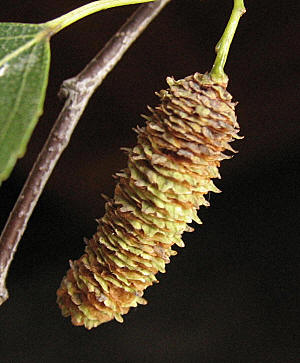 |
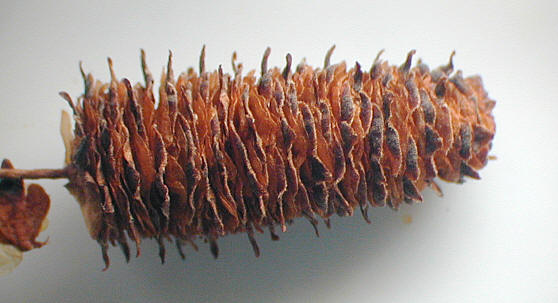 |
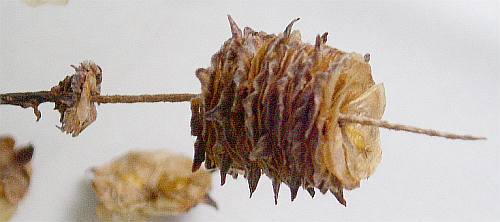 |
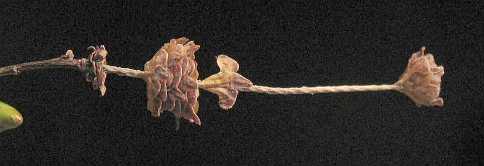 |
A closer look reveals double winged seed cases and what appears to be 'spacers' which separate the seeds along the kebab like catkin's centre which is twisted too, perhaps for strength?
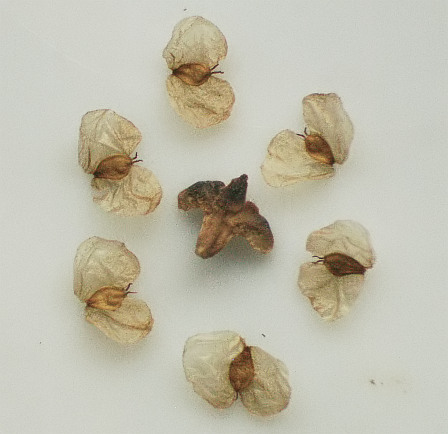 |
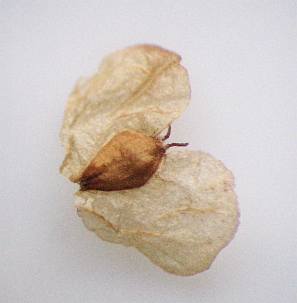 |
Above we see the delicate membrane of the wings and the seed case which sports two 'antenna' like protuberances. The wingspan is approximately 3-4mm and as many as 800,000 to 1000,000 seeds are needed to make up 1 kilogramme. Fertility is around 40% but much depends on a preconditioning cold spell to prime the seed's biochemistry to take root, as well of course as a suitable environment to develop and grow in.
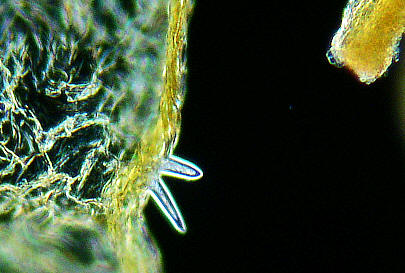 |
Darkfield image at around x 100 above reveals 2 of a few root like projections extending from the thickened edge of the wing. I'm not sure of their true purpose, though I'm fairly certain they are not associated with rooting as such, as they would issue forth from the seed case ? They have a hard siliceous look about them which might indicate their function as 'anchors' but I'm not at all sure.
Despite the vast profusion of numbers of seeds emerging from each mature tree, the fact is that from our two Silver Birch trees at home we find about a dozen or so seedlings each year scattered within 30 metres of the parent trees. Such small numbers of seedlings might seem puny compared to the output of such large quantities of seeds from the parent tree each year, but it does reinforce the essential need for trees to output vast quantities of seed if they are to survive. It's a game of odds, which varies from one area to another. Nevertheless the Silver Birch's chances of replicating itself through seed dispersal are also modified by ground conditions, soil type and climate, which can greatly reduce successful proliferation. Every seedling therefore is a success story in which the odds are stacked heavily against its survival. No wonder trees produce a myriad of seeds !
| All comments welcome by the author Paul James |
Microscopy
UK Front Page
Micscape
Magazine
Article
Library
Please report any Web problems or offer general comments to the Micscape Editor.
Micscape is the on-line monthly magazine of the Microscopy
UK web
site at Microscopy-UK